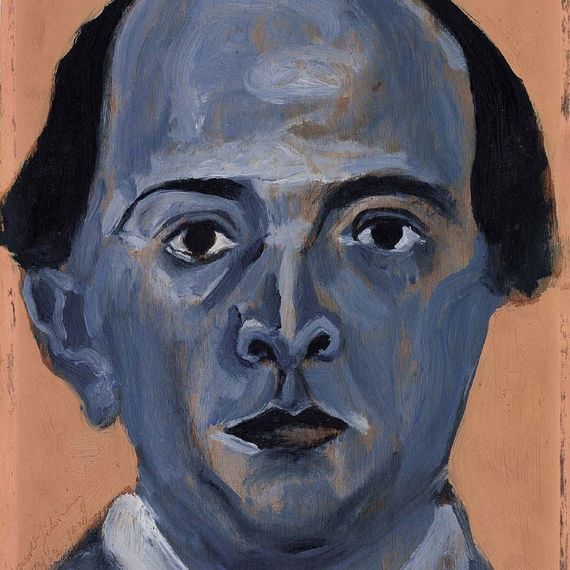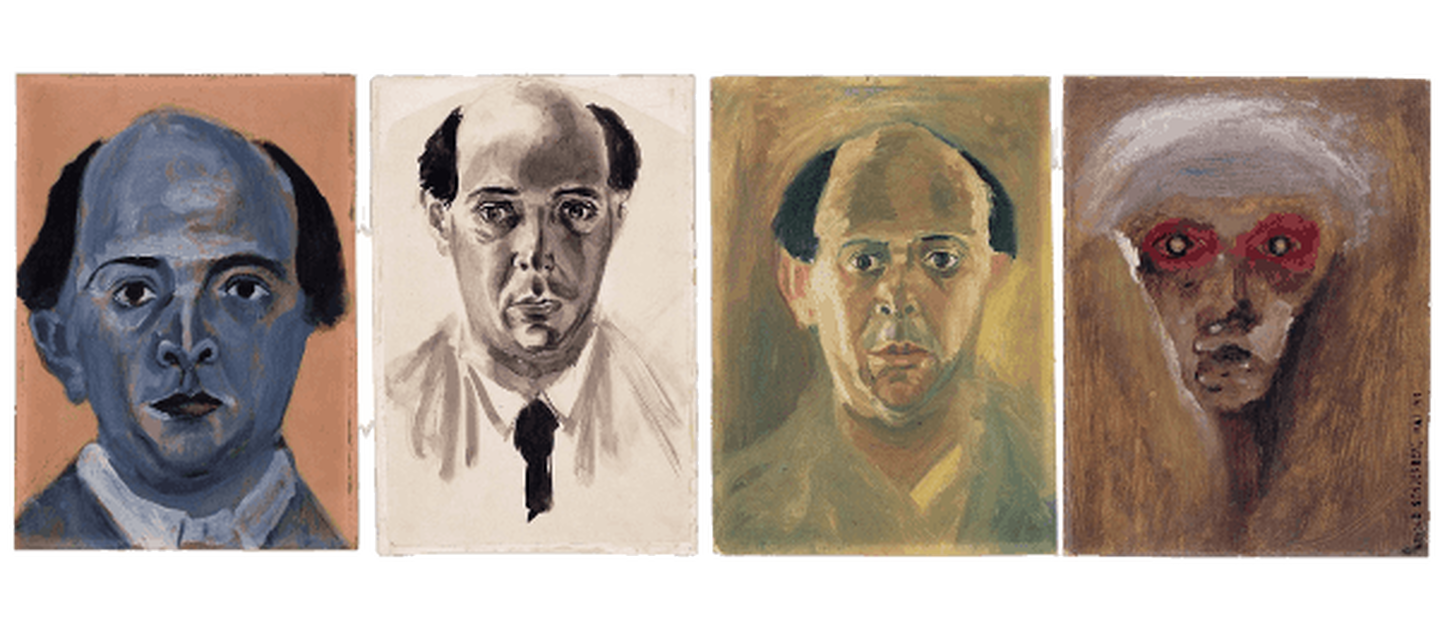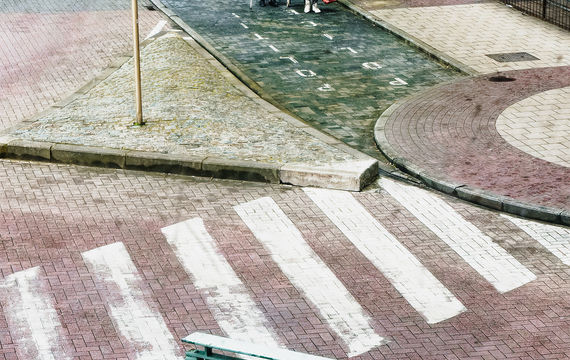From Scores to Brushes
We know Arnold Schönberg as a groundbreaking composer, educator, and theorist – but also as a painter. Starting in 1907, Schönberg increasingly took up painting. By 1910, he was even exhibiting with Wassily Kandinsky's Blaue Reiter group. Musicologist Oliver Wray Neighbour called this period Schönberg’s ‘expressionistic period’, making a link between the composition Pierrot lunaire and the composer’s brief excursion into painting around 1910.
Both as an individual and as an artist, Schönberg stood firmly against any form of compromise. Throughout his life, he fought against narrow-minded and conservative views. Schönberg’s painting frequently revolves around the themes of 'gaze' and 'vision'. As in his musical works, Schönberg’s style of composition for the paintings completed roughly between 1906 and 1911 is that of free association; he does not paint on account of a “beautiful and charming” picture but to “record his subjective impression” (Wassily Kandinsky). His oeuvre encompasses portraits, self-portraits, landscapes, and designs for theatrical sets.
Want to learn more about Arnold Schönberg as a painter? Browse through his paintings and drawings, or be sure to check out the interview "Museum Talk on Painting" conducted by Halsey Stevens with Arnold Schönberg.
--
With special thanks to the Arnold Schönberg Center, Wien for providing text, photo, and video material.



